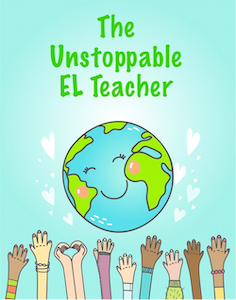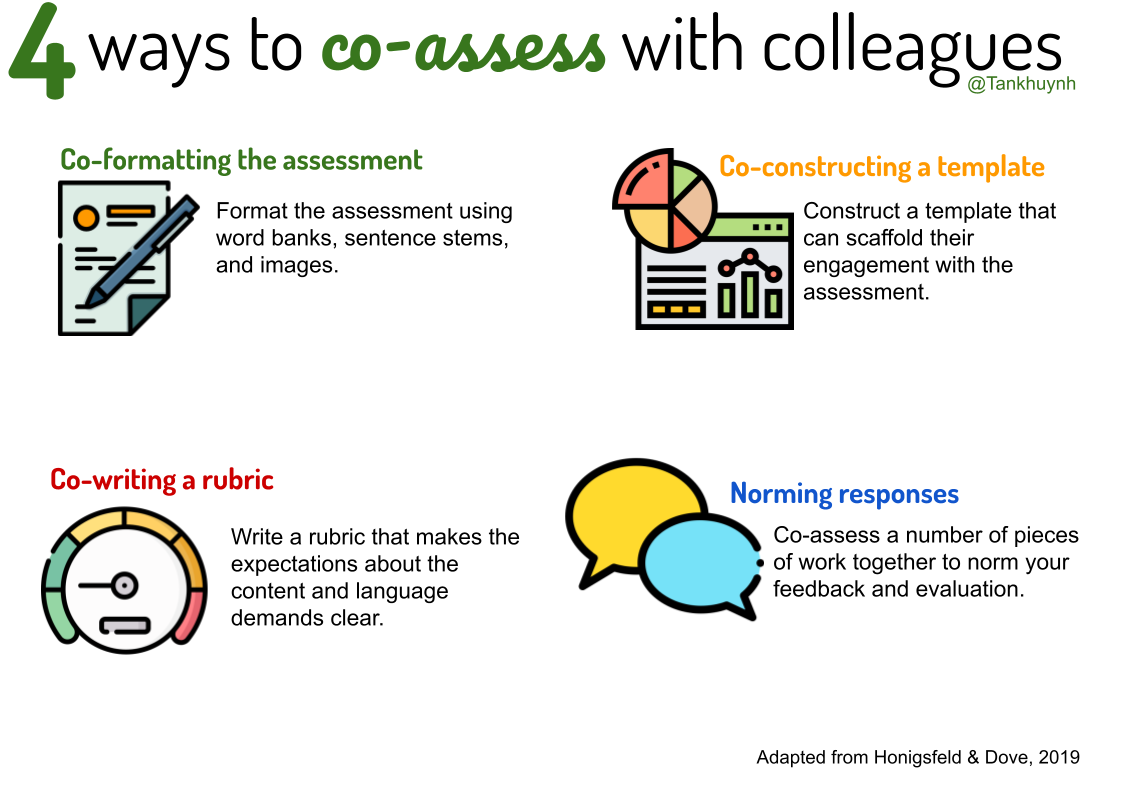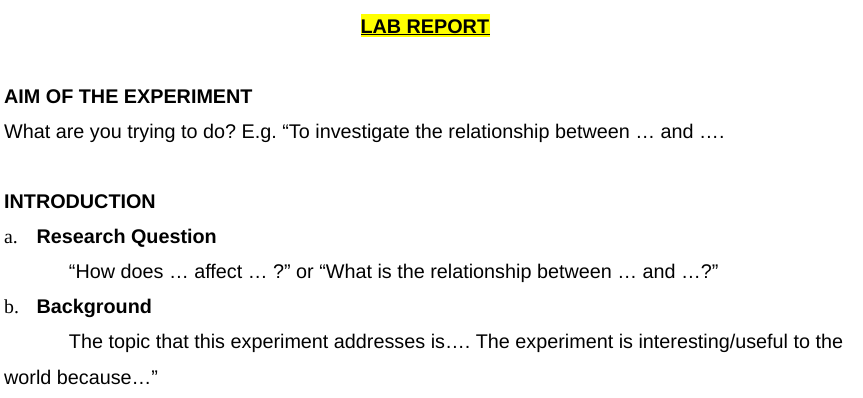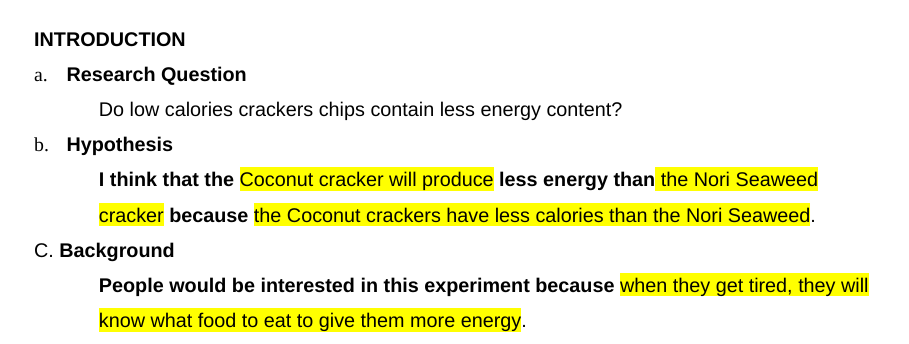4 Ways to Co-Assess ELs with Colleagues
A MiddleWeb Blog

- from pull-out interventions that segregate language learners…
- to remedial intensive English programs that prevent students from accessing grade-level content…
- to push-in services that devalue language specialists as skilled experts…
- to finally arriving at co-teaching where language educators play a key role in designing instruction alongside general classroom teachers.
Bes of all, we now have an expanded and refined understanding that teacher collaboration encompasses more than just co-teaching. It also includes co-planning, co-reflecting, and co-assessing with our skilled colleagues.
Together, these four components are termed the Collaborative Teaching Cycle, detailed in the book Collaborating for English Learners (Honigsfeld & Dove, 2019).
Co-assessing (in all of its forms) is the focus of this post, and I want to highlight many of the key ideas that Allyson Caudill, NBCT and co-founder of @ReadySetCoteach, shared during a recent conversation with me.
Co-formatting the assessment
As EL specialists, we do not have to know the course content as deeply as our teaching partner to have a role in designing the paper-and-pencil assessment. Our role is to collaborate with colleagues to make assessments equitable and engagement possible for language learners.
Co-formatting means coming together to scaffold an assessment that is already designed by our colleague. Together, we look for opportunities to scaffold the document to ensure that it is still rigorous while achievable for all students. When designing the assessment, we can format the language by:
- using synonyms and cognates
- providing word banks
- integrating sentence frames and starters
- incorporating visuals
- chunking multi-step questions
- clearly identifying the language function (e.g., recall, explain, argue, discuss).
Scaffolding the assessment does not water it down. It simply makes achievement by all possible. If we are testing students on the content, we should use whatever language scaffolds students need in order to show us that they know it. Co-formatting the assessment ensures that the language needs are addressed while maintaining the rigor.
In the following screenshot, you will see a science lab report. My science colleague and I sat together to create this for the language learners to use. As he explained his expectations, I added scaffolds into the lab report.
Co-constructing a template
Sometimes an assessment will be an aspect a multi-page document that’s part of the learning plan – such as a science lab report, a history report, a design brief, a literary analysis of a text, or an art portfolio. With this type of assessment, students often engage with the document over a period of days or units. Students then submit the document as a form of assessment.
In these cases the language specialists can co-construct the assessment by creating a template from scratch that can go to any student that needs the extra scaffold. You can use the same strategies as recommended in the section above to help format the template.
Co-constructing templates provides an added benefit to you (the language specialist). As you co-teach and provide in-class support services, you can more easily support all students in engaging with the content and using content-specific language. A well-written, well-structured assessment benefits everyone – not just the English language learners.
In the screenshot below you will see a lab report that had to be co-constructed with even more scaffolding than the one above – for a dual-identified student. We sat together to restructure the lab report by changing the sentence starters to fit the particular experiment. The yellow highlighted parts were the sections that this student had to fill in. She was the only student who received this particular form of the experiment.
Co-writing a rubric
Since teacher clarity is linked to high student achievement, one of the best ways we can serve language learners is by co-creating rubrics. When we create rubrics, we can identify:
- the content knowledge students need to learn
- the language function students must use
- the product students are to produce
- the process students are to follow
When a rubric is co-created, language specialists know exactly how to support language learners while co-teaching. We know the most important concepts to be mastered, and we can be more prepared with creative and well-structured scaffolds right when students need them. Co-creating rubrics is also a form of high-impact co-planning. Time spent co-creating rubrics will produce dividends for the entire unit.
Norming responses
If you are familiar with the content being assessed, then you can certainly assess the task alongside the content teacher. But to ensure the feedback you each give is aligned, it is best to co-assess several pieces of student work together. Come to a consensus on what feedback to offer, how much to give, and what score the piece of work should receive.
This agreed-upon norming prevents a student from being graded too harshly by one teacher while the other grades more generously. To norm your responses, make sure you are using an agreed-upon rubric.
Equity and achievement
Assessments that deal with mastery may lack equity. And assessments that aren’t designed with language learners in mind perpetuate the equity gap. Our role is to make sure we offer just the right amount of challenge and support for each student based on our co-knowledge. We must co-assess with colleagues to ensure that language learners achieve at the highest level. With these various forms of co-assessing, we can!
Reference
Honigsfeld, A., & Dove, M. G. (2019). Collaborating for English learners: A foundational guide to integrated practices. Thousand Oaks, CA: Corwin.





































